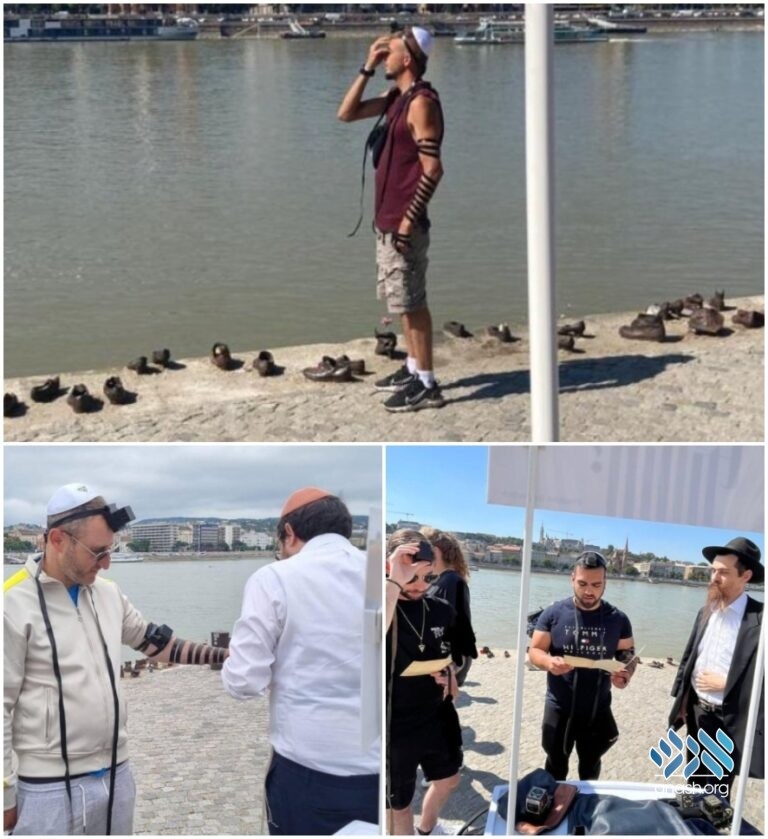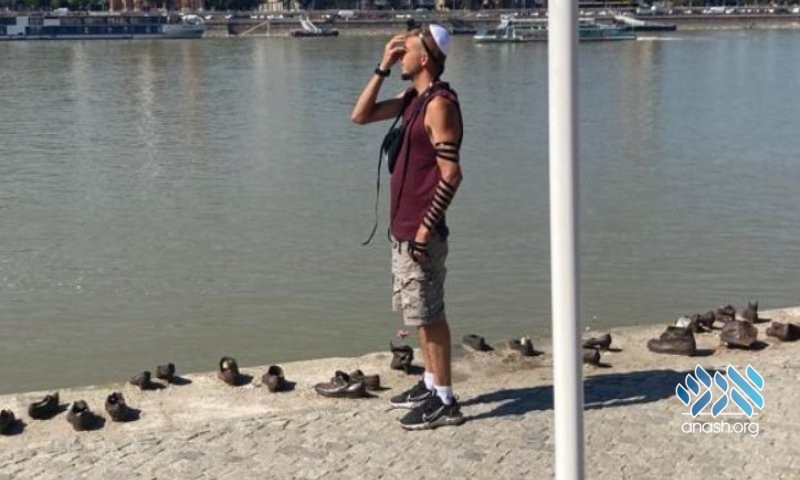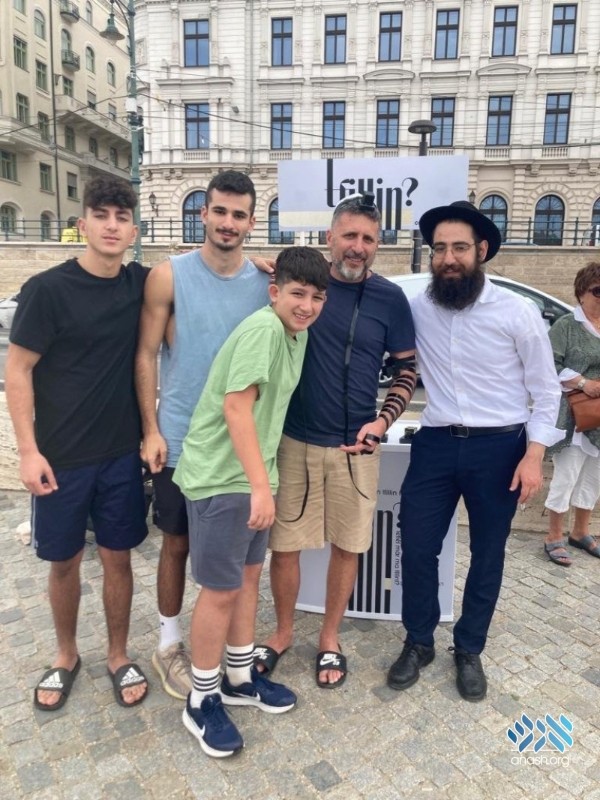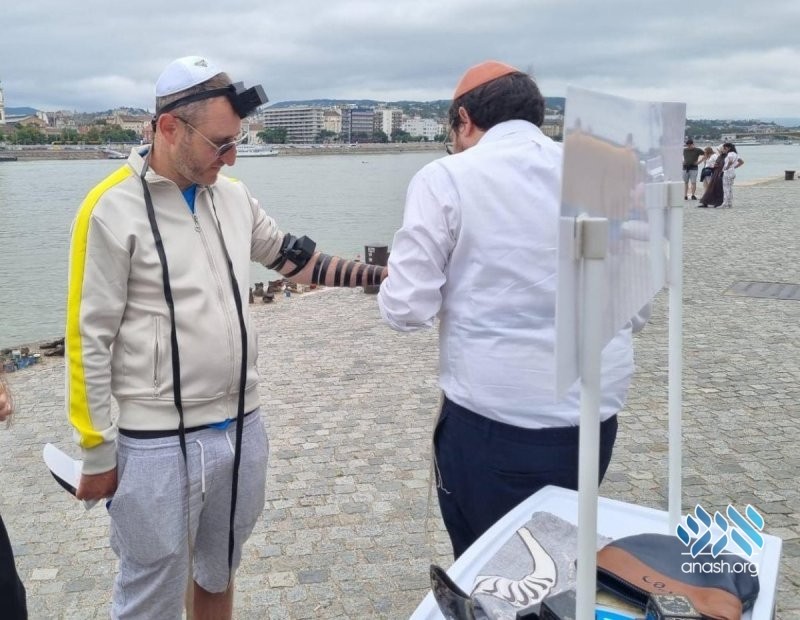On the 80th anniversary year of the Holocaust of Hungarian Yidden, shluchim set up a tefillin stand next to the ‘Shoes on the Danube’ memorial where over 300 lay tefillin each week.
Lubavitcher bochurim set up a tefillin stand next to the ‘Shoes on the Danube’ memorial on the 80th-anniversary event for Hungarian Yidden murdered in the Holocaust. The ‘Shoes on the Danube’ monument consists of sixty pairs of iron shoes spread 60 feet along the riverbank.
Hungary is currently commemorating 80 years since the destruction of the country’s Jews by the Nazi Germans and their Hungarian collaborators, during which, from the summer of 1944 until the end of the war a year later, approximately 564,500 Yidden were murdered out of about 725,000 who lived there.
Most of the Hungarian Jews were murdered in the Auschwitz-Birkenau concentration camp, but many hundreds were executed on the banks of the Danube River, which crosses the Hungarian capital and runs near its Jewish quarter. In some cases, to save ammunition, the local collaborators from the “Arrow Cross” tied the Jews to each other, added stones and weights, shot some of them, and thus they all fell and drowned in the water.
19 years ago, on the 60th anniversary of the end of World War II, a unique monument was built on the eastern bank of the Danube, in ‘Pest’, about 200 meters from the local parliament building. This monument, famous worldwide and associated with the Holocaust of Hungarian Jews, was named ‘Shoes on the Danube’.
The monument consists of sixty pairs of iron shoes spread over 60 feet along the riverbank. Visitors from all over the world, Jews and non-Jews alike, come to visit this monument. On the 80th anniversary of the Holocaust of the country’s Jews, Rabbi Shlomo Koves, a shliach in Budapest, Hungary and Chief Rabbi of the Association of Hungarian Jewish Communities (EMIH), started a meaningful initiative and set up a tefillin stand at the site, offering visitors the opportunity to put on tefillin and say a short tefila.
The tefillin stand is operated by Rabbi Mordechai Beck, the rabbi of the ‘Ohel Esther’ synagogue, located nearby in the seventh district. Rabbi Beck enlisted the help of the 20 shluchim in Budapest, with each taking a weekly shift of a few hours at the stand. According to him, an average of about 300 Yidden put on tefillin at the new stand each month, and a Bar Mitzvah celebration takes place at the site every week.
“The stories we experience here daily are very moving,” Rabbi Beck shared with bhol.co.il. “So many neshamos connect at this place, and we strive to provide them with the means to make the great mitzvah of putting on tefillin a more significant connection to their Yiddishkeit and to link them to Chabad houses and Jewish communities in their areas.” He also said, “It is worth praising the Budapest municipality, which, from the moment Rabbi Koves’ request reached it, approved the request happily, understanding the Jewish community’s need for it.”
“There is no better way to demonstrate Jewish life at a place where Jewish lives were cut short,” says Rabbi Shlomo Koves. “When Yidden put on tefillin and recite ‘Shema Yisrael’ freely at a place where, 80 years ago, Yidden recited ‘Shema Yisrael’ on their way to death, this is our greatest victory over those who sought to destroy us.”






Discussion
In keeping in line with the Rabbonim's policies for websites, we do not allow comments. However, our Rabbonim have approved of including input on articles of substance (Torah, history, memories etc.)
We appreciate your feedback. If you have any additional information to contribute to this article, it will be added below.